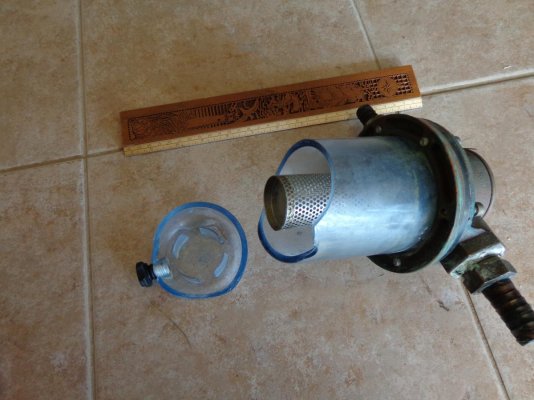rgano
Guru
- Joined
- Oct 8, 2007
- Messages
- 4,995
- Location
- USA
- Vessel Name
- FROLIC
- Vessel Make
- Mainship 30 Pilot II since 2015. GB-42 1986-2015. Former Unlimited Tonnage Master
I have been noticing a small dribble of water coming from the area of the drain plug on my generator's sea strainer whenever I shut the through hull valve while flushing the generator with shore water pressure with the boat in the lift. It did not leak while the boat was in the water. Access is restricted, and I cannot closely examine the unit. Today I connected the shore water at the tee downstream of the strainer and shut the seacock. Kapow! The photo shows the result. Apparently there was a stress crack of some sort which I finally got to show itself. New bowl on order.




